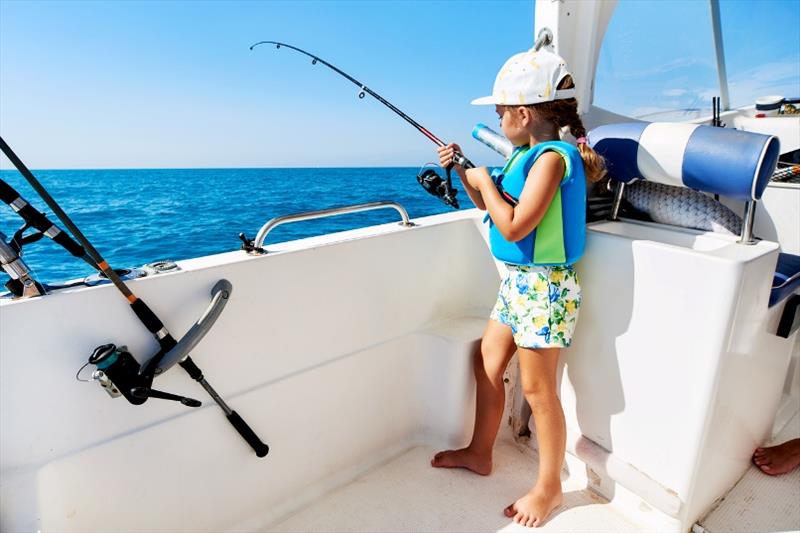
National Fishing and Boating Week 2020
by NOAA Fisheries 14 Jun 2020 13:34 UTC
6-13 June 2020

National Fishing and Boating Week 2020 © Amoklv / iStock
National Fishing and Boating Week took place June 6-13, 2020 and highlights the importance of recreational boating and fishing in our nation. National Fishing and Boating Week occurs each year during the first full week of June.
Take a look at the features below to learn more about recreational fishing across the country.
Progress on efforts to engage recreational anglers and restore habitat
In 2019, NOAA funded three projects to restore coastal habitat and enhance recreational fisheries engagement in North Carolina, South Carolina, and Alaska. One year later, we're checking in on how the projects are benefiting coastal habitats, communities, and economies.
Check in on the progress of habitat restoration projects
Video — Recreational saltwater fishing: Know before you go
Check out this video for a quick explanation of the rules for recreational saltwater fishing in federal waters.
Agency approach to Saltwater Recreational Fishing has changed, progressed through partnership
Russ Dunn, National Policy Advisor for Recreational Fisheries, discusses how over the past 10 years NOAA Fisheries has made important progress in partnership with the recreational fishing community. We will continue to support sustainable saltwater recreational fishing now and years into the future for the benefit of the nation.
Read his leadership message in honor of National Fishing and Boating Week
Saltwater Recreational Fisheries regional snapshots
NOAA Fisheries releases quick-reference fact sheets about recreational fishing across the country.
Learn more about the Saltwater Recreational Fisheries Regional Snapshots
United States acts quickly to assist Alaska for-hire operators
In response to COVID-19, the United States delegation to the International Pacific Halibut Commission recently worked on behalf of the Alaska charter fishing sector to liberalize key charter fishing halibut measures.
Learn more about the new key charter fishing halibut measures
Catch of swordfish takes off as Southern California anglers embrace new technique
More recreational anglers turning to catch-and-release as swordfish catches increase.
Learn more about anglers' new techniques for recreational swordfish fishing
Recreational Fishing Photo Contest
#NOAAsFavoriteCatch photo contest is open to the millions of saltwater recreational anglers across the country. The winning submission will receive a weekend of guided fishing in the Florida Keys sponsored by Bonnier Corporation (lodging included).
Learn how to enter the photo contest
Atlantic highly migratory species angling by the numbers
Highly migratory species (HMS) angling is important to the cultural, social, and economic life of coastal communities from Texas to the U.S. Caribbean to Maine. NOAA's sustainable management and fishermen 's conservation practices help ensure HMS anglers can take to the water throughout the year.
Learn more about Atlantic HMS angling
Southeast and Gulf of Mexico for-hire captains will soon be providing trip level data
Data will be collected from approximately 3,000 charter and headboat vessels, most of which have never reported catch information.
Learn more about how for-hire captains will collect electronic data
Pacific Islands Region Sustainable Recreational and Non-Commercial Fishing Program
Funding to support recreational and non-commercial fishing projects in the Pacific Island region (Hawai?i, Guam, the Commonwealth of the Northern Mariana Islands, and American Samoa) that improve sustainable fishing opportunities, maintain stability of fish stocks, and protect cultural fishing traditions.
Learn more about the program
Your fishing counts
When you share information about your fishing activity with state field interviewers, you're making a vital contribution to fisheries science and management.
Learn how we collect data directly from saltwater anglers
Public fishing access sites
Our online database of public fishing access sites helps us determine when and where state field interviewers go to survey anglers about their fishing activity. You can use the database to find saltwater access locations and view available amenities, such as boat ramps, tackle shops, fuel docks, cleaning stations, and nearby restaurants and hotels.
Learn how you can use the Public Fishing Access Site Register to find a new place to fish